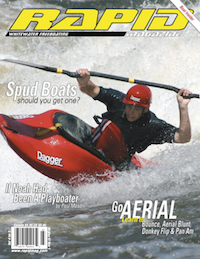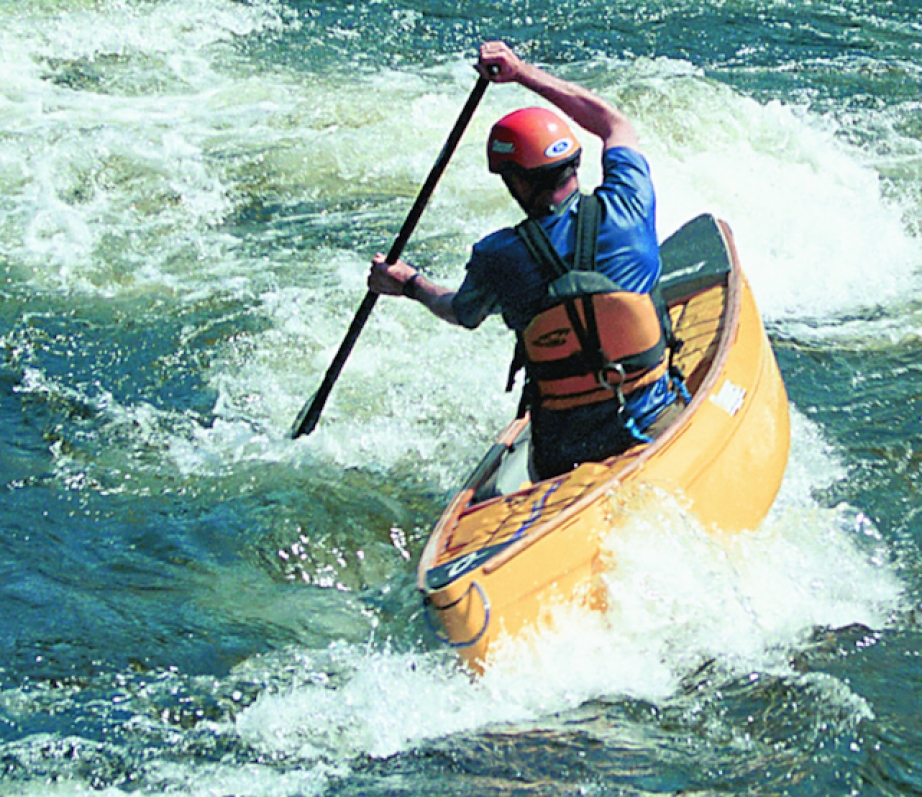Discuss eddy turns with paddlers and you may hear suggestions like: To exit an eddy pool, angle your canoe ten degrees to the eddy line. Others may tell you: Point upstream for fast current, and open your angle for slow water. These conventional methods of choosing boat angle may work for some eddies, but mysteriously let you down for others. So, is there a way to determine the exact angle to exit an eddy? One guaranteed to work whether you paddle a canoe or kayak in class I or V whitewater? You bet there is, and you won’t need a degree in geometry or one of those protractor thing-a-ma-gigs to figure it out. The secret for eddy turns is to read the water and find wave troughs that meet the eddyline. Then, set your boat angle crossways to the trough and surf it out into the downstream current. Water reading is all about finding helpful river features to make a manoeuvre easy every time.
Water Reading
Reading water is the ability to see the different currents and waves that make a rapid. Use this skill to place your boat onto the most helpful currents and waves to assist a manoeuvre. For the eddy exit, look for a wave trough that meets the eddyline and angles downstream away from the eddy pool. Larger and stronger waves are usually at the top of the eddy where the eddyline is narrow and easier to cross. Smaller, more forgiving waves may be downstream of the top of the eddy but to get on them you will be forced into crossing a wider boil line.
Surfing the Trough
Think of waves as waterslides to move your boat. All waves have a high point and a low point. By sliding or surfing your boat downhill from higher to lower water you can move with less effort. Surfs can also move you side to side much like a ferry. Surfing is the key to exiting an eddy. By literally falling off the eddyline and into a wave trough, you can surf away from an eddy pool. The surf lasts for just a moment, but it has the ability to launch the canoe out into the downstream current saving you the effort of accelerating your boat.
Choose the Right Angle
Choosing the best angle to exit an eddy depends on the trough you have chosen to surf out to the downstream current. Imagine a line drawn down the middle of the wave trough beginning at the eddy line and stretching out into the current. Study the water carefully; seeing the trough line will determine the boat angle needed to leave the eddyline. To peel out into the current, paddle your boat into the trough at a perpendicular or ninety degree angle to the trough line. No matter how strong the current, always set your angle crossways to the trough. Now hang on as your boat surfs off the eddyline and into the downstream current.
Reading Trouble?
-
Angled too much? If so, this will cause the boat to turn too suddenly preventing it from surfing out to the downstream current. Flips are common when the canoe is angled so much it is sideways to the wave trough. Try again pointing your boat across the trough line.
-
Angled too little? If the angle is too small, the canoe will surf back to the eddyline. On your next attempt, look again for the trough line and increase your angle to ninety degrees to the wave trough.
-
Paddling into the wave crest? Basically, this hump of water will push the canoe backward into the eddy. Better to aim for the wave trough and drop out of the eddy and into the depression of the trough and surf out to the main current.
Reading water allows you to tap into the power of the river and use it to move your canoe. Surfing wave troughs can make peel outs easier and faster while making your turns look smooth and effortless. Choosing an exit angle of ninety degrees to the trough line is an easy and fun way to surf out of an eddy pool. Give it a try, it works every time.
Andrew Westwood is a frequent contributor to Rapid Mag, OC slalom competitor and an instructor at the Madawaska Kanu Centre.
 This article first appeared in the Fall 2002 issue of Rapid Magazine.
This article first appeared in the Fall 2002 issue of Rapid Magazine.




